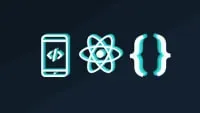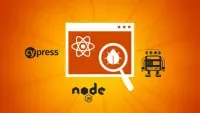
Create a tiny web app with React

This tutorial provides an introduction to React, a JavaScript library for building user interfaces, by walking through the creation of a tiny web application. Learn how to create a small app with React and get started with this powerful library.▼
Course Feature
![]() Cost:
Cost:
Free
![]() Provider:
Provider:
Udemy
![]() Certificate:
Certificate:
No Information
![]() Language:
Language:
English
![]() Start Date:
Start Date:
Course Overview
❗The content presented here is sourced directly from Udemy platform. For comprehensive course details, including enrollment information, simply click on the 'Go to class' link on our website.
Updated in [March 06th, 2023]
This course provides an introduction to React, a JavaScript library for building user interfaces. Participants will learn how to create a small web application in a matter of hours, and discover some of the fundamental React tools. They will also learn how to install and deploy React applications. By the end of the course, participants will have a basic understanding of React and be able to create a tiny web app with React.
[Applications]
After completing this course, students can apply their knowledge of React to create their own web applications. They can use the tools they have learned to install and deploy React applications, as well as create small apps in a matter of hours. Additionally, they can use React to create more complex applications, such as single page applications, mobile applications, and more.
[Career Paths]
1. Front-End Developer: Front-end developers are responsible for creating the user interface of a website or application. They use HTML, CSS, and JavaScript to create the look and feel of a website or application. With the knowledge gained from this course, learners can become proficient in React and use it to create interactive user interfaces. Additionally, they can stay up-to-date with the latest trends in web development, such as responsive design and progressive web apps.
2. Mobile App Developer: Mobile app developers use React Native to create mobile applications for both iOS and Android. With the knowledge gained from this course, learners can create mobile applications with React Native and deploy them to the App Store and Google Play. Additionally, they can stay up-to-date with the latest trends in mobile development, such as augmented reality and machine learning.
3. Full-Stack Developer: Full-stack developers are responsible for both the front-end and back-end of a website or application. With the knowledge gained from this course, learners can create full-stack applications with React and Node.js. Additionally, they can stay up-to-date with the latest trends in web development, such as serverless computing and cloud-native architectures.
4. Data Scientist: Data scientists use React to create data visualizations and dashboards. With the knowledge gained from this course, learners can create interactive data visualizations with React and use them to analyze and interpret data. Additionally, they can stay up-to-date with the latest trends in data science, such as artificial intelligence and natural language processing.
[Education Paths]
1. Bachelor of Science in Computer Science: This degree path provides students with a comprehensive understanding of computer science fundamentals, including programming, software engineering, and computer architecture. Students will also learn about the latest technologies and trends in the field, such as artificial intelligence, machine learning, and cloud computing.
2. Bachelor of Science in Information Technology: This degree path focuses on the application of technology to solve business problems. Students will learn about the design and implementation of information systems, as well as the development of software applications. They will also gain an understanding of the latest trends in the field, such as cloud computing, big data, and cybersecurity.
3. Master of Science in Software Engineering: This degree path provides students with an in-depth understanding of software engineering principles and practices. Students will learn about software design, development, and testing, as well as the latest technologies and trends in the field, such as artificial intelligence, machine learning, and cloud computing.
4. Master of Science in Computer Science: This degree path provides students with an advanced understanding of computer science fundamentals, including programming, software engineering, and computer architecture. Students will also learn about the latest technologies and trends in the field, such as artificial intelligence, machine learning, and cloud computing.
Pros & Cons
-

Well explained and detailed.
-

Useful for React beginners.
-

Clear teaching style.
-

Hands on implementation.
-

Great for learning beyond basics.
-

Requires basic knowledge of JS and React.
-

Not suitable for advanced learners.
-

Limited content.
-

Not enough exercises.
-

Not enough time to cover all topics.
Course Provider






